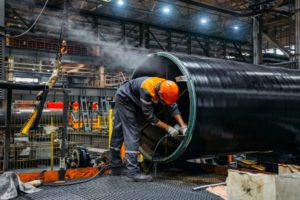Table of Contents
In the realm of industrial safety and quality assurance, Non-Destructive Testing (NDT) plays a pivotal role in ensuring the structural integrity of pressure vessels. This article delves into the world of NDT, offering comprehensive insights into NDT inspection services for pressure vessels. Discover the significance of NDT, how it works, and why it’s crucial for your industry.
The Significance of NDT
Non-Destructive Testing, often abbreviated as NDT, involves using a set of inspection techniques to evaluate the material properties and integrity of pressure vessels without causing any damage. It’s a game-changer in industries where safety and compliance are paramount.
Why NDT is Essential for Pressure Vessels

In the petrochemical and manufacturing industries, engineers design pressure vessels to store and transport hazardous materials and gases. Ensuring their integrity is crucial for preventing accidents, protecting the environment, and maintaining industry compliance. Here’s why NDT is essential:
- Safety First: Pressure vessels often contain substances under high pressure or at extreme temperatures. Any structural flaw or defect can result in catastrophic failures, endangering lives and causing environmental damage.
- Regulatory Mandates: Regulatory authorities require NDT inspections to ensure that pressure vessels meet safety standards. Non-compliance can lead to legal issues, fines, and, more importantly, loss of trust in your operation.
- Cost-Efficiency: Detecting defects early through NDT can save lives and resources. A small investment in inspections can prevent costly repairs, production downtime, and potential disasters.
NDT Inspection Services: What to Expect
When you invest in NDT inspection services, you’re investing in the longevity and safety of your pressure vessels. Here’s a breakdown of what you can expect:

Types of NDT Techniques
- Ultrasonic Testing (UT): Uses high-frequency sound waves to detect material thickness and flaws.
- Radiographic Testing (RT): Involves the use of X-rays or gamma rays to inspect the internal structure of materials.
- Magnetic Particle Testing (MT): Identifies surface and near-surface defects using magnetic fields.
- Liquid Penetrant Testing (PT): Reveals surface-breaking defects through the application of a liquid penetrant.
- Visual Testing (VT): Involves a thorough visual examination for visible defects and irregularities.
The NDT Inspection Process
- Preparation: Proper preparation, including cleaning the surface and ensuring accessibility, is essential for accurate results. This step involves removing any contaminants or coatings from the pressure vessel’s surface.
- Testing: The chosen NDT technique is applied. For instance, in Ultrasonic Testing, a transducer is used to send and receive sound waves that bounce back from the vessel’s interior. The data collected during this phase is crucial for analysis.
- Analysis: Skilled technicians analyze the results obtained during testing to identify defects or anomalies. This step requires expertise in interpreting the data and making informed decisions about the pressure vessel’s condition.
- Reporting: A comprehensive report is generated, detailing findings and recommendations. This report is crucial for documenting the results of the inspection and any necessary follow-up actions.
NDT Inspection for Pressure Vessel Safety

Pressure vessels are the workhorses of many industries, from petrochemical plants to manufacturing facilities. These vessels house substances under extreme pressure and temperature conditions, making their structural integrity paramount for both safety and operational efficiency.
When it comes to maintaining pressure vessel safety, Non-Destructive Testing (NDT) emerges as the unsung hero. NDT techniques are the gatekeepers that prevent disasters waiting to happen and ensure the longevity of these critical assets.
Conclusion
Non-Destructive Testing is the key to safety and compliance in industries dealing with pressure vessels. Investing in NDT inspection services is not just a choice; it’s a responsibility. Protect lives, assets, and the environment by ensuring the integrity of your pressure vessels through NDT.
Are you ready to prioritize safety and compliance for your pressure vessels? Contact Origin Endeavours today for expert NDT inspection services. Embrace NDT today for a safer tomorrow.




